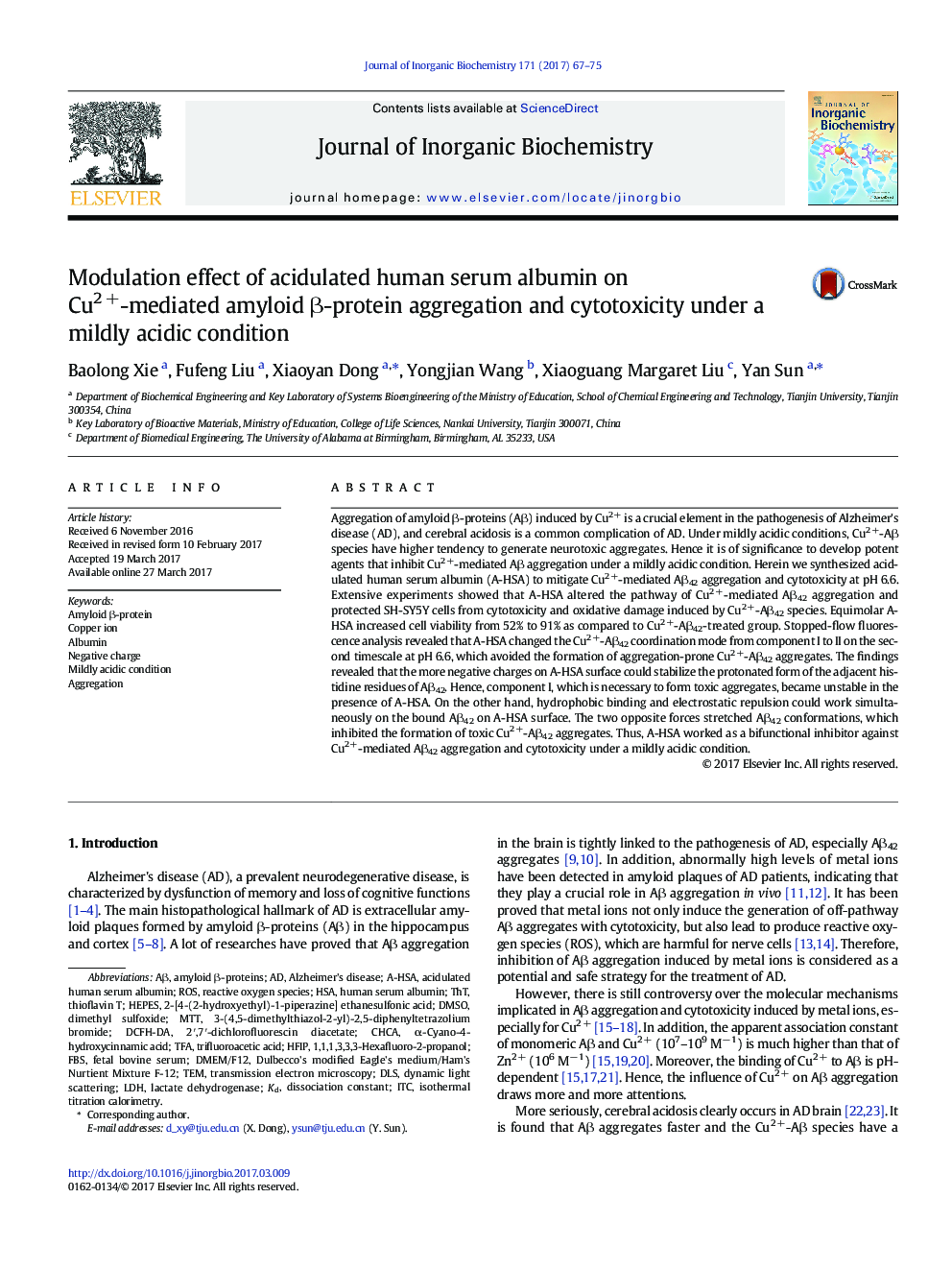| Article ID | Journal | Published Year | Pages | File Type |
|---|---|---|---|---|
| 5152624 | Journal of Inorganic Biochemistry | 2017 | 9 Pages |
Abstract
The research revealed that acidulated human serum albumin (A-HSA) changed the coordination mode of Cu2+ and amyloid β-proteins (Aβ) at pH 6.6, which avoided the formation of aggregation-prone Cu2+-Aβ42 aggregates. Thus, A-HSA worked as a bifunctional inhibitor against Cu2+-Aβ42 aggregation and cytotoxicity under a mildly acidic condition.87
Keywords
DLSHFIPFBSDCFH-DATFAITCHEPESAβHSA1,1,1,3,3,3-hexafluoro-2-propanol2′,7′-dichlorofluorescin diacetate3-(4,5-dimethylthiazol-2-yl)-2,5-diphenyltetrazolium bromideDMEM/F12DMSOMTTROSamyloid β-proteinAlbuminhuman serum albuminCHCATrifluoroacetic acidα-cyano-4-hydroxycinnamic acidTemThTAlzheimer's diseaseAggregationThioflavin TDissociation constantDimethyl sulfoxidefetal bovine serumNegative chargelactate dehydrogenaseLDHTransmission electron microscopyDynamic Light ScatteringIsothermal titration calorimetryReactive oxygen speciescopper ion
Related Topics
Physical Sciences and Engineering
Chemistry
Inorganic Chemistry
Authors
Baolong Xie, Fufeng Liu, Xiaoyan Dong, Yongjian Wang, Xiaoguang Margaret Liu, Yan Sun,
